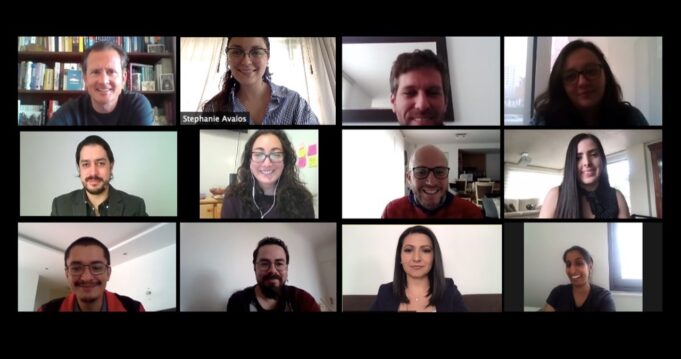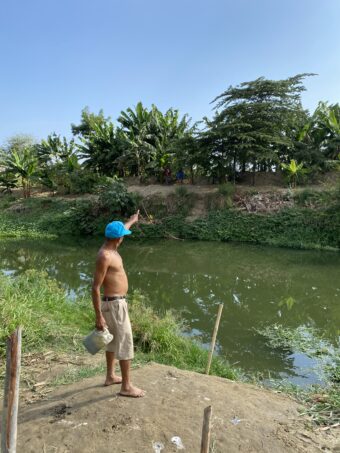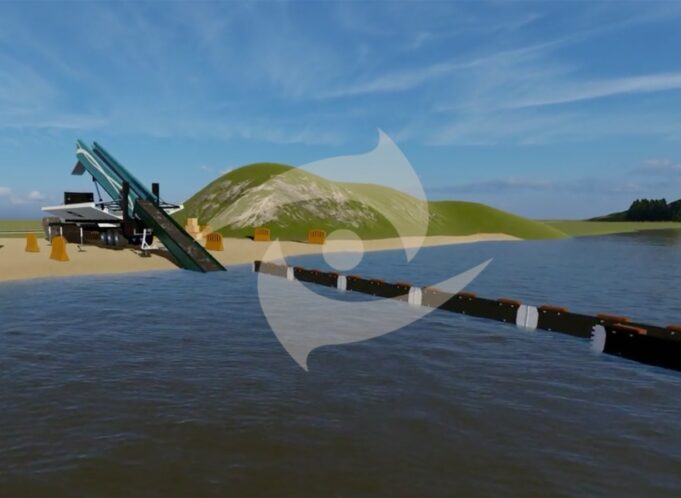This post is also available in: Español (Spanish)
When I first met the Ichthion team, I was working at the Ecuadorian Ministry of the Environment. Due to fortuitous reasons, they walked into my office one morning and pitched their project. I later found out that they were hoping to meet with someone else, but that’s another story. Back then they were just starting operations in Ecuador but they were already a well known startup in the environmentalism arena due to the recognitions they had received from Climate-KIC and MIT.
Beyond the novelty of their reputation, I dare say it’s impossible to hear about what Ichthion is doing – developing technology to save our rivers and oceans – and to meet the team that is behind this company, and not become an immediate ally. I was sure that it was only a matter of time until they deployed a project in the country.

A few months later I leaped over to the startup world and joined the Ichthion team. One of the first tasks I collaborated on was to complete the due diligence documentation for the PROTEUS project, which had been presented to the Benioff Ocean Initiative and was moving into the final stages of revision. It was an exciting time for all of us at Ichthion, both for the operations team in Ecuador and the R&D team in the UK. This deployment would be our first full sized Azure system installation.
I must admit that at that point the technological aspect of the project still escaped my understanding. I did grasp the full-picture and the key facts, but it wasn’t until the engineers presented us with the final designs for the system that I understood the potential it has to improve waste management around the world.
The Azure system, Ichthion’s river-based technology, combines the latest research on fluvial pollution with passive fluid dynamics, probabilistic modelling and material transport. It is a barrier system designed to trap a broad spectrum of synthetic waste in most (and probably any) river around the world. The barrier is porous, preventing upstream-downstream pressure imbalance, with a set pore diameter and density to trap even small items of waste, such as cigarette filters and bottle tops. The target depth of the barrier allows fluvial fauna to pass under it and minimizes the number of microscopic organisms that can get trapped in the barrier. With a unique, tailored shape, the barrier intercepts the material, which is then directed towards extraction points, and with the help of an automated conveyor belt the waste is extracted and deposited onto receptacles that can then be transported towards adequate waste management sites. Additionally, the system implements a censoring mechanism to classify and measure the recovered material. This generates invaluable data for decision making and evidence-based policymaking. Furthermore, the system has the capacity to generate and run on its own clean energy.
As a former public official, I found that one of the most attractive features of this technology is its capacity to generate valuable data for decision making processes. The type of information we are going to be generating through our operations is a game changer in river protection and governance, which is why the provincial government was excited to join in implementing this project and finding ways to complement and scale up its benefits.

Only a few weeks after my arrival at Ichthion, we received confirmation from BOI that our project had been one of nine selected to be part of the most important global coalition to date, fighting plastic pollution in rivers and preventing it from reaching the oceans. We were ecstatic, ready to hit the ground running, as I am sure most of the projects were. However, only a few days after signing the agreement, we learned that the world was facing a global pandemic and we entered a rigid lockdown policy, first in the UK and then in Ecuador. Here in Ecuador borders were closed, interprovincial transport was restricted and a curfew was implemented.

As the weeks went by, we did our best to use the time in confinement to virtually plan for when we would be able to deploy the project. The weeks then turned into months and we knew we needed to face the fact that we might have to begin implementing the project without being able to conduct any site visits. To make that scenario work, we pulled all of our resources together and realized that collaboration was the only way to move forward. We would have to trust and rely on local partners more than we had anticipated. Thanks to the support and information provided by the local government and the national environmental authority, we were able to select a specific site for the deployment and get the operation permits. We also became very resourceful in finding information proxies in order to run the feasibility studies, and in generating new allies to help us interact with the local community without risking their health or our own.
Eventually, the restrictions slowly began to lift, and we were able to finally travel to Manabí and go visit the Portoviejo river and engage with the local authorities and community. During our first visits to the site, it was most exciting to see the river and to be able to gather more specific data to feed into the design detail. But with each visit, we got more acquainted with the community, their realities and the profound challenges they face in light of the pandemic and other pre existing circumstances. The site suddenly stopped being a generic location and is now very clearly in our everyday actions, the Milagro commune in the Picoaza parroquial rural administration of the city of Portoviejo. The people in the community are no longer a social unit in our conversations, but are now relationships and opinions and requests.

The human aspect of the project is definitely becoming the most relevant one at this moment, and probably throughout the project, as well as the most challenging but most empowering as well. To watch this project slowly come to life has been one of the most rewarding professional and personal experiences. I am proud and excited to share with you, other coalition members and all of our readers, the experiences and learnings of the Ichthion team as we continue this journey to implement and deploy our Azure system in the Portoviejo River in Manabí, Ecuador. We will keep you posted on the progress we make, until our next blog we hope you’ll enjoy the content we share.
For further information, questions, or suggestions, follow us on our website and social media platforms:







